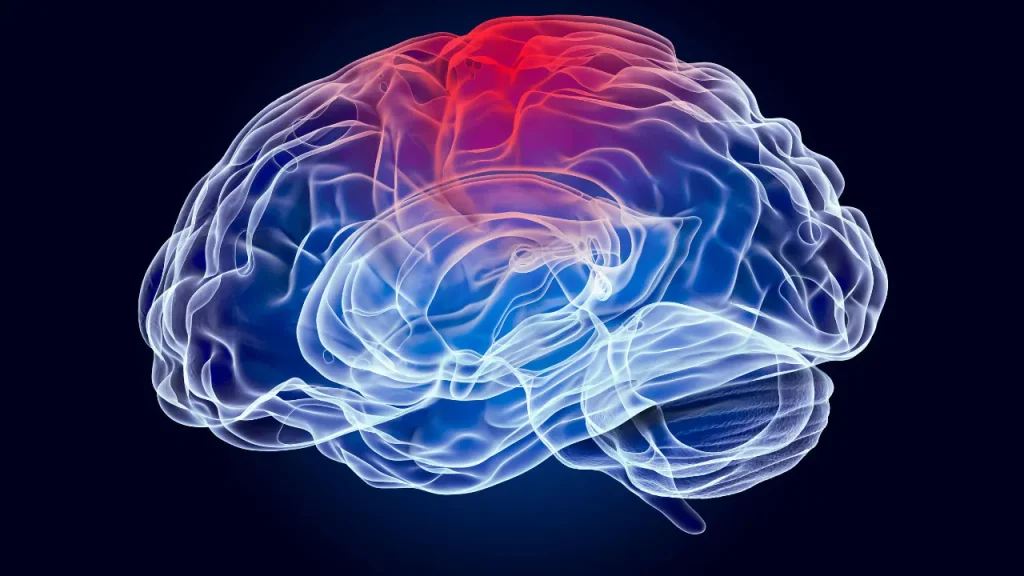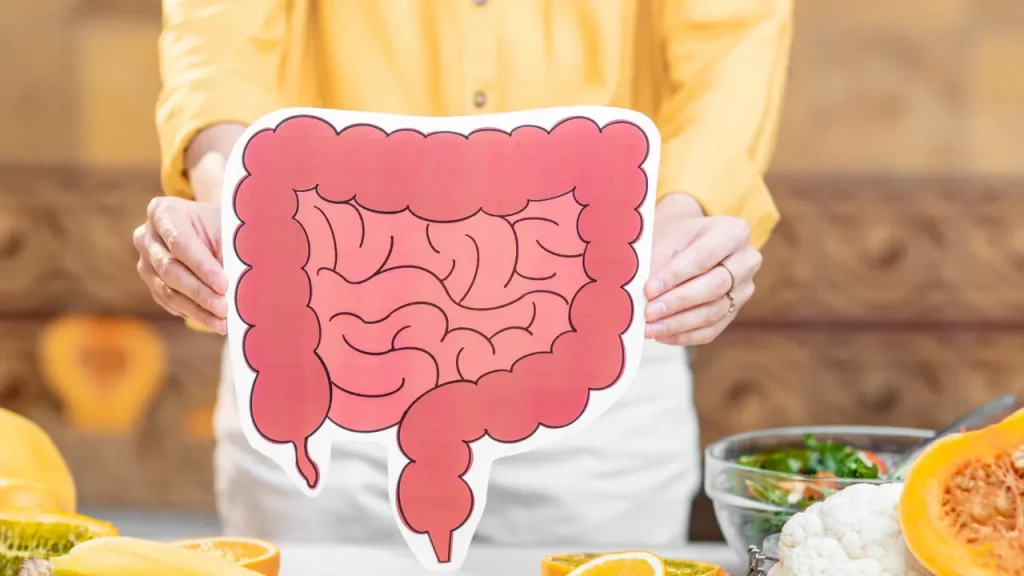Brassica oleracea var. italica, the technical name for broccoli, is a cruciferous vegetable of the Brassicaceae family. The nutritional profile, health advantages, and possible interactions of broccoli need careful examination since it is a food powerhouse. In-depth analysis of broccoli is what this article tries to do, highlighting its value as a nutritional supplement and providing suggestions for its safe use.
You May Also Like:
Should You Worry About Alpha Brain Side Effects? 5 Alternative Ways to Boost Your Brain Power
Broccoli: Benefits, Dosage, Side Effects, Drug Interactions, and Other Important Information is an original (NootropicsPlanet) article.
The Nature of Broccoli
The green plant known as broccoli is distinguished by dense profusions of closely bunched flower heads, or florets, affixed to a substantial, edible stem. It offers a multitude of vitamins, minerals, and bioactive substances and has a high nutritional profile.
The key elements in one cup (156g) of cooked broccoli are vitamin C (135% DV), vitamin K1 (245% DV), folate (26% DV), potassium (14% DV), and fiber (10% DV). Notably, broccoli also has a high concentration of bioactive substances including flavonoids and glucosinolates, which are important for its health advantages.
Health Benefits of Broccoli
Numerous scientific research have focused on the phytochemicals present in broccoli, especially glucosinolates and the breakdown products such as sulforaphane, indole-3-carbinol, and 3,3′-diindolylmethane. These substances are said to have anti-inflammatory, anti-oxidant, and anti-cancer activities.
The body’s natural detoxification enzymes are stimulated by sulforaphane, which improves the removal of possible carcinogens. Additionally, it has neuroprotective properties that may delay cognitive ageing by lowering oxidative stress and inflammation in the brain.
By altering estrogen metabolism, indole-3-carbinol and 3,3′-diindolylmethane have been linked to a lower risk of hormone-dependent malignancies including breast and prostate cancer.
By feeding the good gut bacteria, broccoli’s high fiber content maintains gut health, strengthens the immune system, and lowers the risk of several illnesses.

Chemistry of Broccoli
A plethora of chemical constituents in broccoli contribute to its nutritional value and possible health advantages. Its abundant vitamin, mineral, fiber, and phytochemical content highlights its complex chemistry.
Broccoli is a good source of numerous vitamins and minerals, including vitamin C, vitamin K1, vitamin A, vitamin B9 (folate), and minerals including manganese, potassium, and iron. A water-soluble vitamin called vitamin C works as an antioxidant to prevent oxidative stress in the body. Fat-soluble vitamin K1 is essential for healthy blood coagulation and bones. The metabolism and proliferation of cells both depend on folate.
Broccoli is an excellent source of dietary fiber, with cellulose, hemicellulose, and pectin making up the majority of its composition. The gut bacteria ferments these carbs in the large intestine after they are resistant to digestion in the small intestine.
Phytochemicals: Glucosinolates, flavonoids, and carotenoids are the main phytochemicals found in broccoli. Glucosinolates are sulfur-containing molecules that are degraded by the enzyme myrosinase into bioactive isothiocyanates, such as sulforaphane, either in the plant when damaged or by gut bacteria. Flavonoids are polyphenolic substances having antioxidant effects, including kaempferol and quercetin. Beta-carotene and other carotenoids are pigments that act as the body’s precursors to vitamin A.
Omega-3 and omega-6 necessary fatty acids and essential amino acids, which are the building blocks of proteins, are both found in tiny levels in broccoli.
The outstanding health profile of broccoli is a result of the many interactions between these chemical constituents inside the human body. The intricacy and promise of this popular vegetable are shown by the ongoing study into the chemical makeup of broccoli and its effects on human health.
Physiological Mechanisms of Action
The physiological mechanisms of action of broccoli’s bioactive components may be primarily blamed for its health advantages.
A metabolite of glucoraphanin, sulforaphane, has a variety of mechanisms of action. It turns on the Nrf2 pathway, a crucial regulator of cellular resistance to oxidants, which is connected to nuclear factor erythroid 2-related factor 2. By increasing the production of several detoxifying and antioxidant enzymes, this activation lowers oxidative stress in cells. In blocking the nuclear factor kappa B (NF-B) pathway, a crucial physiological response to inflammation, sulforaphane also demonstrates anti-inflammatory properties.
It has been acknowledged that indole-3-carbinol and its dimer, 3,3′-diindolylmethane, generated from glucobrassicin, another glucosinolate, may have a role in the prevention of cancer. These substances are thought to control estrogen metabolism, lowering the risk of malignancies that rely on hormones.
As antioxidants, flavonoids like kaempferol and quercetin scavenge free radicals and lessen oxidative stress. By reducing inflammatory cytokines, they also have anti-inflammatory effects.
Because it acts as a prebiotic and feeds the good gut flora, the dietary fiber in broccoli helps to maintain gut health. In turn, this promotes a strong immune system and lowers the chance of contracting certain illnesses.
Thus, broccoli’s extensive spectrum of bioactive chemicals and their corresponding physiological processes are responsible for the vegetable’s many health advantages.

Optimal Consumption of Broccoli
For broccoli, there is no established daily intake. Nevertheless, the USDA’s Dietary Guidelines advise include a variety of vegetables, including cruciferous vegetables like broccoli, in one’s diet.
A cup of cooked broccoli added to one’s daily diet might considerably help satisfy vital nutritional demands due to the nutrient-rich nature of broccoli. The precise recommended dose, however, may change based on dietary requirements and overall health.
The Dietary Guidelines for Americans offers welcome and up-to-date insights on how we ought ot structure certain dark green vegetables (including Broccoli) into our daily life.
Side Effects of Broccoli
Despite having many health advantages, eating too much broccoli may have unfavorable consequences. Due to its high fiber content, a high consumption of broccoli may result in bloating, gas, and intestinal irritation. Furthermore, goitrogens, which are found in broccoli, may interfere with thyroid function in those who already have thyroid disorders.
Due to broccoli’s high vitamin K concentration, anticoagulant drugs like warfarin may interact with it and lose some of their effectiveness. Before drastically changing their broccoli diet, people taking these drugs should check their healthcare providers and maintain a constant vitamin K intake.

Potential Substance Interactions with Broccoli
Although broccoli is a meal that is very healthy, it may interact with other substances, especially prescription drugs. The most notable are listed below:
- Medicines that prevent clotting: Vitamin K, a substance essential to the blood clotting process, is abundant in broccoli. Some anticoagulants, including warfarin, function by blocking vitamin K’s effects. The effectiveness of these drugs might be affected by a rapid increase or reduction in vitamin K consumption. As a result, those on anticoagulants should attempt to consume vitamin K-rich foods like broccoli on a regular basis.
- Drugs for the thyroid: Similar to other cruciferous vegetables, broccoli contains substances called goitrogens that may harm people with thyroid issues by interfering with the production of thyroid hormone. If these people eat a lot of broccoli, their medication dose may sometimes need to be changed.
- Supplemental indole-3-carbinol: A dietary supplement called indole-3-carbinol is a substance created when the antioxidant glucobrassicin in broccoli is broken down. However, taking this supplement coupled with a diet high in broccoli may result in an overdose of this substance, which might have negative side effects including balance issues or skin rashes.
These interactions show how crucial it is to take dietary considerations into account while using medication. It is crucial to remember that these possible interactions usually happen when broccoli is consumed excessively rather than regularly. Before making any big dietary changes, particularly if you are on medication, always check with your doctor.
Responsible Use of Broccoli
Despite being rich in nutrients, broccoli is just one part of a balanced diet. In order to guarantee a wide intake of various nutrients, it is important to eat a range of meals. Nutritional imbalances may result from relying too much on a particular food, such as broccoli.
Cooking broccoli before eating may be advantageous for those with thyroid issues because heat inactivates goitrogenic chemicals, lowering their potential influence on thyroid function. It is essential for people on anticoagulant treatment to consume foods high in vitamin K consistently, such as broccoli, and to speak with a healthcare professional before making substantial dietary changes.
While broccoli’s bioactive chemicals have shown potential health advantages, further study is required to completely comprehend their effects, particularly with respect to their function in the treatment and prevention of cancer. It is important to understand that although a diet high in cruciferous vegetables, such as broccoli, may lower your chance of developing some cancers, it cannot replace traditional cancer therapies.
Broccoli:
Conclusion
Beyond its exceptional health profile, broccoli serves as a potent reminder that your dietary choices ought to include a diverse range of foods to avoid imbalances. While this green cruciferous wonder has shown promise in various health aspects, it’s vital to remember that it can complement traditional treatments but not replace them, particularly in the context of cancer prevention and therapy.
We hope you’ve gained a new perspective of Broccoli. At this point, It’s clear that it’s certainly more than just a vegetable. It’s a powerhouse of vitamins, minerals, and bioactive compounds that contribute to your overall well-being.
So, the next time you’re enjoying a plate of this nutritious dark green, appreciate not only its taste but also its complex chemistry and the potential it holds for your health.

References:
- “Multiple therapeutic and preventive effects of 3,3′-diindolylmethane on cancers including prostate cancer and high grade prostatic intraepithelial neoplasia” Retrieved From: https://www.ncbi.nlm.nih.gov/pmc/articles/PMC4197384/
- “Dietary Guidelines for Americans, 2020-2025.” Retrieved From: https://www.dietaryguidelines.gov/resources/2020-2025-dietary-guidelines-online-materials
- “Cruciferous Vegetables and Cancer Prevention.” Retrieved From: https://www.cancer.gov/about-cancer/causes-prevention/risk/diet/cruciferous-vegetables-fact-sheet
Important Note: The information contained in this article is for general informational purposes only, and should not be construed as health or medical advice, nor is it intended to diagnose, prevent, treat, or cure any disease or health condition. Before embarking on any diet, fitness regimen, or program of nutritional supplementation, it is advisable to consult your healthcare professional in order to determine its safety and probable efficacy in terms of your individual state of health.
Regarding Nutritional Supplements Or Other Non-Prescription Health Products: If any nutritional supplements or other non-prescription health products are mentioned in the foregoing article, any claims or statements made about them have not been evaluated by the U.S. Food and Drug Administration, and such nutritional supplements or other health products are not intended to diagnose, treat, cure, or prevent any disease.


